Schaefer Olive Drab: 1944-1945
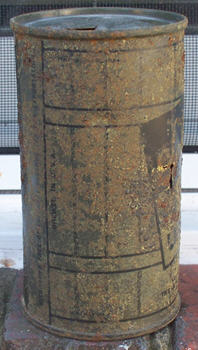 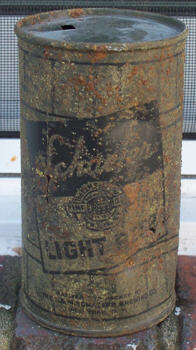 |
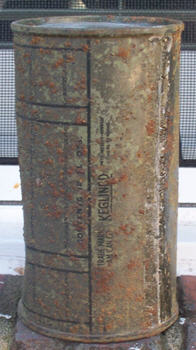 |
This month's can is an olive drab can from the Second World War. During World War II beer cans were reserved for military use. This one is from Schaefer Brewing in New York.
During the First World War, the US struggled to supply "the comforts of home" to the Doughboys. The Red Cross and various other groups helped but it wasn't enough. During the Second World War the US government was determined to do a better job and reserved a certain percentage of comfort items such as beer and cigarettes for the servicemen. Service members could buy such items, along with gum, pop, candy, books, etc, at a PX. When feasible, small mobile PXs were set up, sometimes in the back of jeeps, to supply such items to those on or near the front.
The Military and Beer in World War II
Breweries were required to set aside a 15% percent of their production for military use. The prohibitionists were still around and active and tried to convince the military to ban alcoholic beverages totally. Instead the military supplied only 3.2% beer to servicemen, not the full-strength beer which had between 4-7% alcohol. Theoretically servicemen could not get drunk on 3.2% beer, although, as one observer noted, they had "never visited an exchange where cold 3.2 was served to GIs after they had competed a physically demanding week of hard training in the heat of summer, especially in the South or the California desert." (Cooke 49) The problem with 3.2% beer for the breweries was that it required them to brew the beer in a separate batch, and not every brewer made low alcohol beer.
Breweries were not required to sell beer to the military. Some refused, noting that with rationing cutting their supply of malt, hops, grain, and bottles, that they didn't have enough beer to supply their regular customers.
Packaging
During the war the military used both bottles and cans to send beer overseas. Cans were lighter, more compact, and didn’t break as easily as bottles, but while both glass and metal were rationed, bottles were somewhat easier to replace than cans so the military used both containers.
At first the breweries used cans with the same labels as the pre-war cans. All they did was change the tax statement on the label to indicate that the relevant taxes were not applicable. The new statement read “Withdrawn Free of Internal Revenue Tax for Exportation.” In 1944 the military switched to olive drab cans, apparently in an effort to make the cans more uniform in appearance. They used the same labels in 1945, but then in 1946 they switched back to civilian labels with the “withdrawn free” statement.
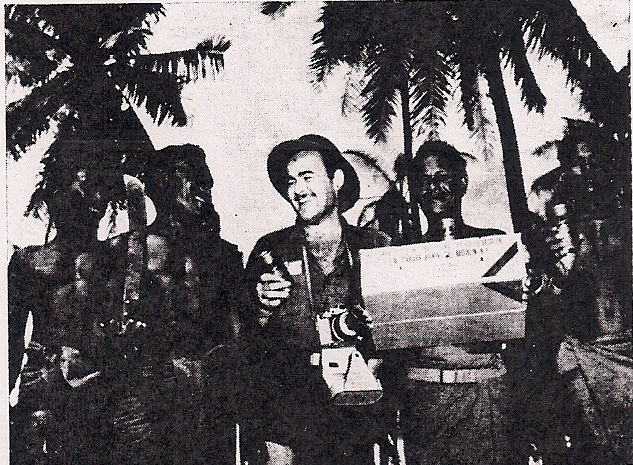 |
Photographer's Mate, First Class, Felix Minet, a former employee of The F. M. Schaefer Brewing Co., is shown with a can of Schaefer beer which he bought on an island somewhere in the South Pacific. The friendly natives in this picture are seeing U. S. beer for the first time. Schaefer is now canning tremendous quantities of beer for the armed forces overseas. Photo published December 1944.
|
I have only 4 OD cans in my collection. Here they are. From left to right. 1. Schaefer The Rheingold was dug out of an old foxhole in Italy by some European relic hunters. |
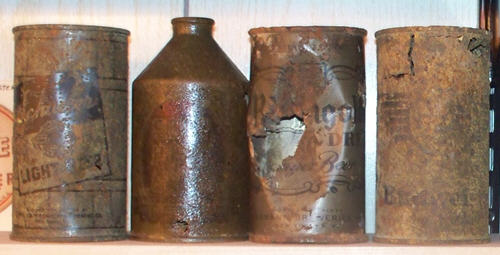 |
Post-War
The US began to ease rationing restrictions in late 1945, although it took several years to eliminate all rationing and price controls. Beer cans became available for civilian use again in early 1947. Can companies began advertising that "cans are back!"
Beer Vs. Ale
Beer had long been more popular in the US than ale. Schaefer had been the first brewery to introduce lager beer to the US in the mid 19th century. By the early 20th century only New England drinkers still preferred ale to beer. After World War II New England tastes switched to match that of the rest of the country. Why the switch? One possible explanation is that New England servicemen developed a taste for beer as opposed to ale during the war. The military supplied much more beer than ale to the soldiers and sailors, probably because of a combination of the 3.2% alcohol restriction (ale is generally higher in alcohol than beer) and because much more beer was produced by breweries nationwide. Of all the Olive Drab cans, only one brand of ale has surfaced to date, a Red Cap Ale from Carling in Cleveland.
For More Information
| To learn more about how the US military supplied beer and such reminders of home as gum, candy, tobacco, etc, make sure you read James J. Cooke, Chewing Gum, Candy Bars, and Beer: The Army Px in World War II. |
|
Sources Used
The American Brewer
Brewers Journal
Brewery Age
Cooke, James J. Chewing Gum, Candy Bars, and Beer: The Army Px in World War II. (University of Missouri Press, 2009)
Emails with Dr. Cooke.
Modern Brewer
Stars & Stripes
